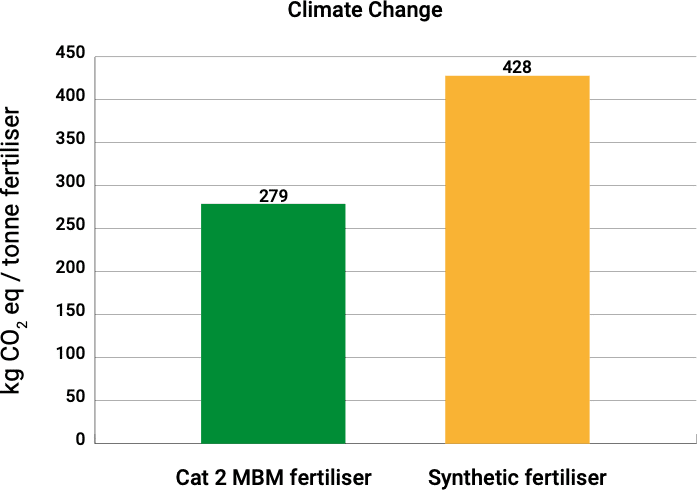Many farmers are evaluating how they use fertiliser to reduce the carbon footprint of crop production. This includes cutting fertiliser use levels, more accurate and timely application, and also using natural fertilisers or manures with a lower carbon footprint.
Category 2 Meat and Bone Meal (Cat 2 MBM) is a relatively low carbon source of fertiliser. It’s a co-product of animal by-product rendering which is suitable for fertiliser but not for uses higher up the value chain such as animal feed.
A recent Life Cycle Assessment study from Blonk Consultants in partnership with EFPRA showed that Cat 2 MBM offers environmental advantages compared to synthetic fertilisers with equivalent nutrient profiles including the carbon and water footprint.

279 kg CO2 eq. are emitted per tonne of Cat 2 MBM produced. Heat use accounts for 70% of the total climate change impact. Around 95% of heat generated is from natural gas, the remainder is from animal fat which has an insignificant contribution to climate change. Inbound logistics and electricity make up the other contributions.
The Category 2 MBM fertiliser impacts were compared to a synthetic fertiliser, at the production point (excluding usage), based on macronutrient equivalency for nitrogen (N) and phosphorous (P) content. The MBM average content was calculated as 9.6% N and 5.2% P at 98% dry mater content. A synthetic equivalent fertiliser was derived based on commonly used conventional N and P fertilisers (mixes of ammoniacol N compounds and phosphoric acid).
Learn more in Case Study 19.